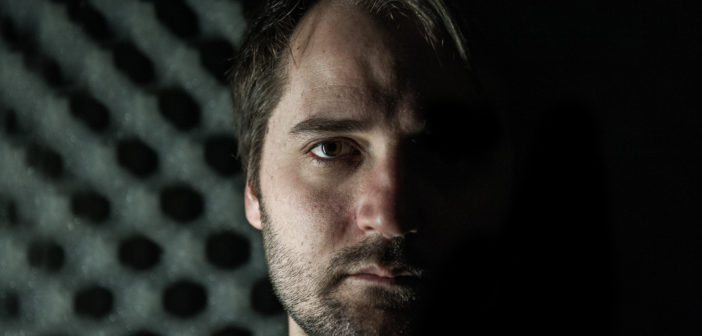Pierce Warnecke is a Californian born, French raised audio and visual artist based in Berlin. His work spans electronica and IDM based, electro-acoustic compositional, field recordings and experimental techniques. He has released on Fremdtunes, Bee records, Attention Circuit, Gaffer records Gruenrekorder and Room 40.
Innerversitysound: Before we get to memory fragments can we trawl back through your memory log and reconstruct some form of history from the bits that are readable?
Pierce Warnecke: I went to France as a teenager, my parents went to France. I went to high school in France. Actually a lot of my musical discoveries happened in my teenage years in France. I studied music in Boston afterwards. I’m actually from California. I studied physics in France, I did it for two years but in spirit I dropped out after about three months. But I kept the charade going for two years because I didn’t really see an alternative. I kept on doing this all throughout because I didn’t really find the studies I was looking for. After two years I had applied to Berkley college of music, and I had pushed it back because I didn’t really want to go back to the US but I didn’t really find any area of study and most of what I did, did not work out. So I decided just to do it and I went back to Boston for four years, from 2003-2007.
Innerversitysound: There was a section in your work which had you producing funk electro output, The Machine Serves ep, The Machine Regrets ep and the Copy/Waste ep all have the movement towards this inclination but with continuing redundancy and decay in the intent towards the idea of the dancefloor musician. What happened?
Pierce Warnecke: It was one of those things. I started listening to electronic music through electronicia, Warp, idm stuff in the late 90’s. Continued in the 00’s with Raster Norton style stuff. That was really my main influence for a very long time and I tried to follow that and bring into that more harmonic and melodic parts. I just got bored with it. I did perform that stuff quite a bit in France and I toured the US with it a little bit but after a while I felt that I was not being very original. Not that being original is a goal or a quest or an ambition. But I felt like it was redundant and not necessary to make that kind of music. Really I just got bored with it, mostly the performative aspects, being on stage and triggering samples and waiting for 4 or 16 bars, tweaking some filter and moving on to the next prepared arrangement. It felt almost like Djing than actually really performing and that’s not something I have really wanted to do, to Dj. So I started slowly giving up on it, I started exploring other music at the same time, more ambient and drone stuff. I really stopped when I moved to Berlin where I saw that there was a whole world where you could just do weird music. I really thought for a long time I had to continue what I was doing if I wanted to get gigs or release music. After Berlin I realised that I really don’t need to continue doing this. The love was gone, I guess you could say.
Innerversitysound: Your connection with Frank Bretschneider in the work Sinn + Form has you exercising the other aspect of your life, that of a visual artist, specifically that of live projections. Can you tell us a bit about the cross fertilisation of disciplines and your visual art and how that has developed your overall creative life?
Pierce Warnecke: I think that really started. I think I would have to go back to the Warp era stuff, when Autechere released Gantz Graf. That was a huge moment for me and I know that they didn’t actually make the video but at the time I was studying and I did see people making things in jitter where you could get some results and I really decided at that point I wanted to do sound and video together and I have just been working at it ever since. I guess I never really had a good opportunity to get on stage with it. And because I didn’t study it I didn’t push that aspect of it but in Berlin things opened up a bit more and it was definitely more possible to take some risk and show that side. I did and thanks to that and Frank, we decided to start working on our project. So that was really the start of a lot of this audio visual aspect of what I am doing. At least that is the public face of it, I would say. I have been doing it for a while but I just did it at home.
SINN + FORM // Live Excerpts from Pierce Warnecke on Vimeo.
Innerversitysound: The opportunity you had of putting together the field recording album for Gruenrekorder, Darkness in Daylight is another familiar form for the contemporary recording musician. Environmental sound collage and your engagement with the mythic form of darkness as being a fertile place. You even quote Borges and Zola to this end. Can you expand on these interests?
Pierce Warnecke: The whole field recording, after graduating from school, the field I studied in was very synthesiser oriented. I wanted to take a break so I decided for a little while I was just going to do field recordings. I think what happened when I started with field recordings is that just piecing together pieces of things and deciding this is good and this is not good felt a little trite. I started thinking about ways that I could start to build a narrative or a story, even if it wasn’t a very clear one and I definitely didn’t want to go into to something generic. So Darkness in Daylight was the first project where I did this, where I tried to write something ahead of time, some sort of text that would guide me through my decision making process with a bunch of field recordings. Not just in a composing process but also in the selection of sounds. So not just going out and recording a sound that I thought would be interesting and put it together. The idea was to set a framework for me from within to work. The idea of recording something at night came about…, also for me there is definitely a mythical side to that, but there is also a very technical aspect to it. Because at night there is less pollution, less noise pollution. Less dogs barking, less children screaming and laughing. It was a very nice experience to walk around the city at night or out in the countryside at night and be alone and really experience that side of life that people don’t really see. They don’t really do night walks. But it’s really an actually wonderful time to be out. Especially in the city. Usually when I am out really late at night in the city I have been drinking. I’m not really in my normal state. But this was go to bed early and wake up at 3 or 4 in the morning and walk around at night. It was a great experience.
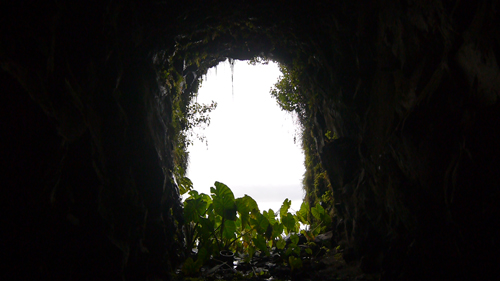
Innerversitysound: To put forms to things before you go to something and to try to get some form of correspondence between what sound is, how sound is represented and how the phenomena of actual sound that occur. This is a very fertile and generative grounds for musical exploration. It has all the problematics we could explore in the idea of memory.
Pierce Warnecke: One thing that comes to mind when you mention that is Spectral music.There are many wonderful Spectral music pieces but it does rely on a certain technical side of analysis of an actual existing sound. I have been listening up to the release of Memory Fragments to quite a bit of Spectral music. Grisey, even some of the more modern Dumistrescu, although I don’t think he likes to be called Spectral, perhaps Hyper-Spectral or something but there is the idea of sound with in it. Where you take a sound, a pitch, and you analyse it an then you create a pitch class based on the timbre of your compositions. So I do think there is something along the lines of what you are saying about using the technical side of music to create a form, or to create a context in which to compose. At the same time what I have been trying to do recently is to do,… there has always been a technical side especially in electronic music to the development of new sounds…, but I have also been trying to keep a poetic side, I think. With this idea that writing, some sort of texture, some sort of a framework, a fictional sort of thing. Sometimes just a text that inspires me to keep a poetic side to music and art in general because if things do get too technical, for example in music and video, if you are doing an audio-visual piece, if you lose the poetic side of things it just becomes data display and sonification. I think it does need to have some sort of mystery and a poetic side.
Innerversitysound: Memory Fragments starts tracks often with this piano key tone that trails off. I was wondering about this strategy. Is this a memory that leads into what you are doing in Memory Fragments. A musical memory, or a personal memory or a statement about your intent?
Pierce Warnecke: I think the idea was to start from something,.. the piano was the first instrument that I started playing when I started playing. So there is a personal connection there, but I have moved very far away from that. Not only away from real instruments but further and further away from tonality ideas and rhythmicality. The piano is really the base instrument of composition, so I think the idea was to start from that and move away from it, throughout the album. It comes back obviously. This piece was created for a festival in Madiera, quite a while ago really, in 2013. So some of the material was quite old on it and after doing the performance I got another couple of gigs but actually I did it in a lot of haste and I was dissatisfied with the music and I concentrated a lot on the visuals. I had been in Madiera for a week basically to prepare this. I ended up spending most of the time on the visual aspect because I had come with a little bit of music prepared. But after preforming it a few more times after that I had become dissatisfied with the music and I wanted to rework it. It took me a while to come back to find the time to develop it. There are definitely harmonic parts to it, you could say ambient parts, and parts that are much more deconstructed and I think it shows a personal path between the time I started making this music, which was a good amount of time ago, and the final touches on it. So that would be my introduction to the compositional side of the album.
Innerversitysound: On the different tracks, you have obviously got names that elicit certain ways of thinking, Sparseness gives way to the infinite, which suggests a naïve sense of metaphysics and Built on Folds and Braids which I am not too sure you are talking about dressmaking topology, Deleuze or…
Pierce Warnecke: That was actually the first sketch of that song was other slow arpeggio with notes, left-right, left-right, left-right, going up in pitch and so it reminded me of folding and braiding.
Innerversitysound: What is the instrumentation that you are using to construct your albums nowadays?
Pierce Warnecke: This album was a mix of electronics and real instruments. So obviously the piano in the start and that’s probably the only clear instrument. There is a decent amount of clusters and beat frequencies created by saxophone, that you can kind of hear as well. But it’s a little more veiled. There’s guitar but I believe it’s only ebow, I don’t think I have any sort of attacks in it. It’s mostly single notes. I had friends play single notes, held notes and then use those as material. I didn’t write a specific score and have them play.
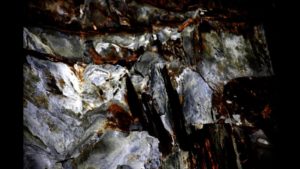
Innerversitysound: What software environment are you mainly utilising for this purpose?
Pierce Warnecke: I just use Abelton. In terms of Synths, I used a lot of low modulation FM synthesis, so not very bright Fm synthesis. FM is based on a sinewave and you add harmonics modulating it’s frequency. So I did that but with very low amounts of modulation, so you are getting just a little bit of timbre added it to the base sine waves. I try to stay pretty simple on the synthesis side. I mentioned I had stepped away from electronic synthesis and synthesisers for a while and this was sort of the gateway back into it. The new stuff I am working on is actually very synth orientated.
Innerversitysound: Do you work on the programming side of things, programming patches or subroutines or the like?
Pierce Warnecke: I do programming in Max MSP, mostly for video but also for sounds. I use Max for generating more texture based stuff. It’s kind of a layering based thing with randomised pitches and randomised loop points and fade in and fade outs. It’s kind of automatically generates samples and automatically generates a richer sound based on a simple sample. But that’s more sample manipulation stuff. But I use a lot of a lot of big sine banks to generate some high frequency, beat frequency sort of stuff.
Remnants Remembered from Pierce Warnecke on Vimeo.
Innerversitysound: In terms of what you are trying to technically achieve on this album for how you personally construct things. How would you describe what this album achieved for you in terms of your technical development as an artist?
Pierce Warnecke: I don’t think that I am going to go back to having anything harmonic or melodic for a while. I should probably eat my words because you never know what is going to happen. Right now I have no interest in doing anything too melodic or harmonic. So this might have been a transitional, a kind of pivotal album for me. What I wanted to do with this was try to have a fair balance, I tried to have a mixture of instruments, electronics and field recordings. So kind of all nature of sounds, all types of sound sources. But without it being clearly stratified. So adding the field recordings came a little bit later and it was kind of a difficult choice but I wanted to do it in that way, the same way I had the instruments and the electronics blended together, you can’t really tell which is doing what. I tried to insert the field recordings so that they blended extremely well together, or at least didn’t shock I guess, or sound like; ‘oh here’s the sound recording of a bird at night’, just played on top of some chords or something like that. So that it was more of a homogeneous mixture of sound. In terms of the compositional side what this brought to me was a loosening of forms of the bars and the beats and arrangements of AB, AB, whatever, parts and transitions. The main parts of the entire album, it is cut up into songs, but it was originally a one hour piece out of which I selected portions and the full piece had a lot of generative parts.
So there were a lot of parts that I had very sparse piano parts or synthesiser parts being triggered on different sized loops and I let it run for a long time and I recorded and from that I selected portions. So there is a choice of notes and a choice of durations but I left a lot to chance and went back and edited those chance operations to build a much bigger structure. So in-between that very sparse structure I started building more consistent parts by adding the field recording parts by adding layers of saxophone notes doing beat frequencies. And then finally after that I chopped them into parts into actual tracks. One example is I added a very distorted part because I felt the album needed something a little more intense, otherwise it kind of strolled along at the same pace. I think that that pretty much covers my process behind it.
So in terms of my personal development it was trying to blend all the different types of influences of sound, of types of sound, of qualities of sound. And also finally getting rid of the bars and the beats and the loop side of composing which I think I had been hostage to for a number of years and I was finally able to free myself from that. It was my own fault, I wasn’t a slave, but it took some personal exertion and some time to say that I was ok with that and I was really going to do. Like you mentioned The Machine Regrets and all that kind of stuff. It wasn’t like I woke up one day and decided I am going to break with this. It was a really long process. In fact The Machine Regrets I didn’t want to release originally then a Dutch label got in touch and I told them I am not really interested in this type of music anymore. I had it up on my soundcloud. Then I said ‘why not, it’s honest, it’s me, I am doing that I may as well try it.’ But I was losing interest at the time. So I think this album might be a transitional point as I mentioned earlier, moving really away from rhythms, repetitive and structured rhythms and Western harmony.
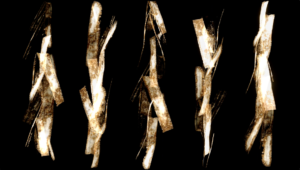
Innerversitysound: You mentioned chance operations, John Cage’s concept, he probably borrowed it from someone else….
Pierce Warnecke: If you dabble in chance, if you dabble in random things for a little while and see the results, after a while it’s sometimes hard to to tell which ones were the chance operations and which were deliberate. It’s funny how you can be tricked and not really recognise which were chance and which were chosen. So I have been using that more and more, in playing back samples, always randomizing where the sample starts, or the pitch of the sample. Just because you have chance operations in there it doesn’t mean that it’s all completely chance. It’s not all randomized, but adding a little bit of chance along with some decision making, it just leads to richer results. When it comes to composing you listen to the same thing over and over again and it gets quite boring after a while. You can’t always be in love 100% with what you are doing if you are constantly listening to it and I do get bored listening to music again and again. So using chance, or using a little bit of chance has the advantage of making it interesting and compelling for you as a composer each time you come back to the work.
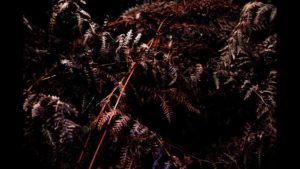
Innerversitysound: So not just fragments of memory, you have also got veracity of memory and oblique construction of memory by chance. So we are almost getting to this point of unreliability of reporting. Memory itself is almost a device for replicating events and you are moving as an artist towards your fabrications being real fabrications. It encompasses the problematic between memory and creative acts, moving away from fundamental questions about music and more towards the poetic, less about the scientific aspects and more towards a purely creative idea of music.
Pierce Warnecke: I think that in many ways apparently the photograph killed traditional painting and opened up an expressionist or impressionist side of viewing the world for painter in the nineteenth century. Recorded sound and coming back to recorded sound as a documentary method, I don’t want to make a documentary work. There are many people who do that with field recordings and acoustic ecology. And I think it’s great and important but as you say that is a much more scientific approach and I am not so much interested in that I would rather tell a story, no matter how abstract or non-narrative it is. I am not so interested in the rigid compositional approach that maybe would be closer to a scientific approach where you generate a certain algorithm and generate a certain pitch class and you stick to that no matter what. That’s definitely something that many composers, especially algorithmic composers do. There’s different schools, but they will create an algorithm and they will stick to that no matter how the music actually sounds, it doesn’t matter because the algorithm dictates it but I like the idea of using something strick or semi-strick method to generate parts but then to go and cut it and ruin that strickness, why not? Or take a complete 90 degree turn and go in another direction. That’s your privilege as a cogniscent being just to say yes I am going to build this and then half way through I am going to do something completely different. Because that allows you to retain an interest. If everything was built in advance and everything was calculated, then you don’t really need to watch the work. You know what I mean, you just read the description. That would give it to you, there would be no surprise. To go back to memory, what I tried to do with this album is to work within the idea of the memory. With the advent of digital recording, or even analog recording, photography or field recording or video.
When memory went from being something really subjective, personable and you being able to play that back in your mind, however you wanted it, to being something very public and very fixed and more objective I guess. What I like with memories is that they do kind of shift and sway in your consciousness and they do change. I have a couple of memories from childhood with my sister where one of us was taken to the opera by my grandmother. I have the distinct recollection of seeing the piece, I can see the stage and I can see the actors. It was something terrible, Les Miserables, or something like that, but I was there and I saw it. I knew my sister wasn’t there, it was like a privledge to go and see this thing, it was like a special event. My sister has the exact same memory, that she went and saw the exact same thing and that I was not there. There is no way for us to find out who is actually right. So I like to try and use this idea of memory as a very unreliable source and if you are working with digital recordings everything’s very reliable, there are hardware failures, but generally speaking technology is very reliable. It makes me uncomfortable, I like the idea of things being able to break down and change.
Mem_ry Fr_gm_nts (Full – Excerpt) from Pierce Warnecke on Vimeo.
Innerversitysound: You had a visual exhibition where you had a piece that deals with panpsychism. Philosophically David Chalmers brought this concept back, it had previously been touted by Spinoza amongst others, about all things being alive and conscious, both animate and inanimate objects. If this is the poetic version of what the world is versus a scientific view which is a sort of cataloguing impulse. Your engagement with the idea of panpsychism, was this somewhere close to your intuitions?
Interpretive Panpsychism (#1) from Pierce Warnecke on Vimeo.
Pierce Warnecke: To be honest I started doing a couple of installation concepts that used objects and performances as well. Where I would go out and go to a place and do field recordings. Where I would go to a place and take something from that place in the form of a document, a recording. But when I started being in this place I started seeing things with your eyes and taking video and using that and then I started actually collecting objects. Because you are there and there are just strange objects and I became very interested in all these things still being somehow linked together even though they were removed from their homes so to speak, from the places that I took them. And so for a performance I did called Textures, where in the beginning I took objects because I found that they had very rich textures and I had a microscope camera and I would film them. But then I started thing more about how they could be still joined to the field recordings, to the video, to the images of the stills that I took. And so the idea of panpsychism and liveliness within an object, that everything from or in a place could be included in that object itself. I don’t believe in it, I don’t think that objects are alive. But I like that idea, it is a romantic idea. I do like the idea that an object has it’s own life and it has everything that it has been through, the deterioration and the fabrication of the things that it is surrounded by are somehow still imprinted on it. And they are physically in some ways.
I found that while working with these objects, that even though they were decontextualize and taken away, there is still something, a ghost of the place they were taken from stays with them no matter how much you modify them. So I began to try and change the objects a little bit by hanging them in a dark space and filming them so that they were completely isolated, it was just the object and nothing else. So some of the videos that I have done, I have continued this process for Memory Fragments as well, follow these ideas. And I have also tried to paint them completely black and getting rid of all the colour and all the texture which was the initial thing that really interested me. Just keeping the form for example. Just keeping the form, there is something about the form of an object, it was made by it’s context and it was made by the place that it was and so no matter what you do there is something that remains within the object that comes from the lace that it was taken from. Hence the panpsychic approach to it, even though I like the idea of it but I don’t adhere to it as a concept. So for the exhibition itself Interpretative Panpsychism, the idea was more of a fictitious experiment were one could imagine the process of freezing and unfreezing and breaking down objects and elements to extract that soul if there was a soul in an object. So sort of like the idea of decanting or cold pressing an object to try and get it’s soul and see what the soul of an object would be once you have removed all the artifice and all the physicality of it. I guess I like that idea and it was very fertile, and still is very fertile for me as a way to work. But I am not a very mystical person and I don’t believe in the actuality of panpsychism.
Memory Fragments is available now on Room 40
Pierce also has recently released video art on Sedition in collaboration with Mathew Biederman

